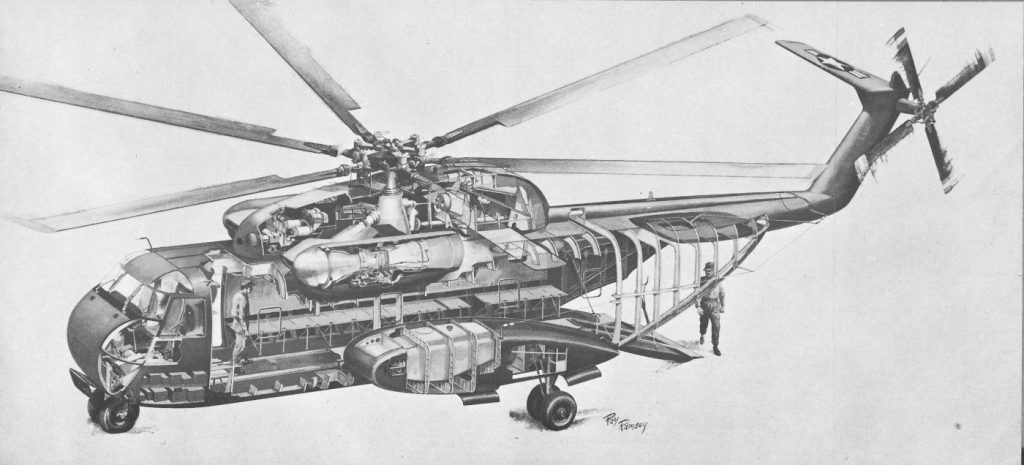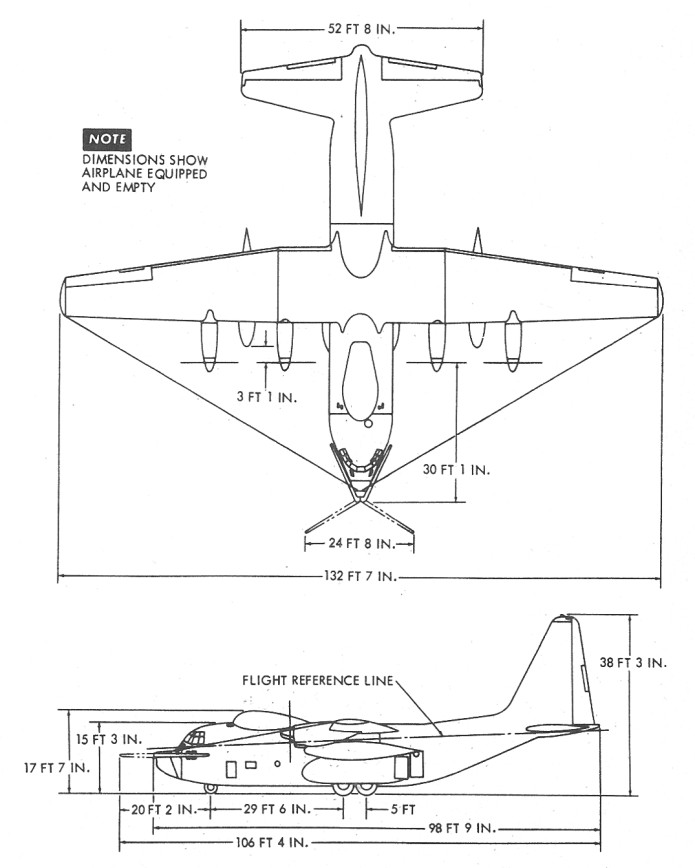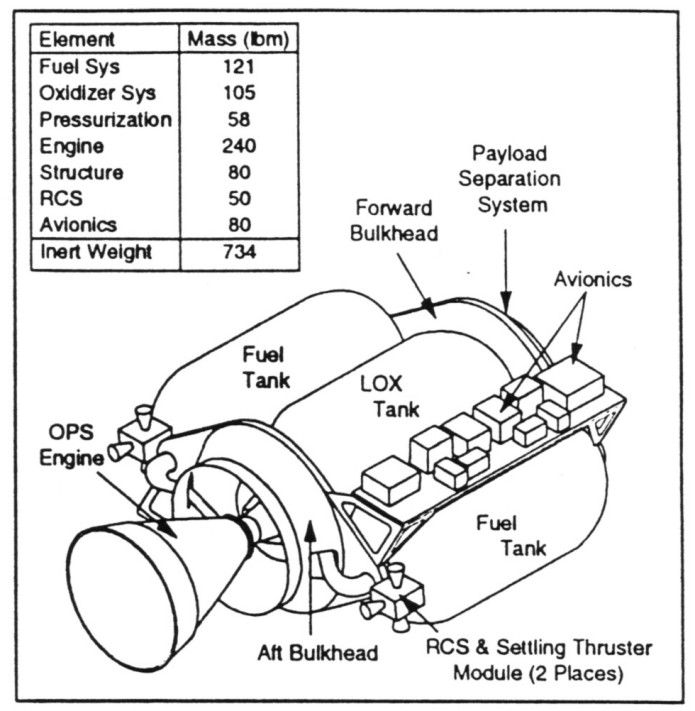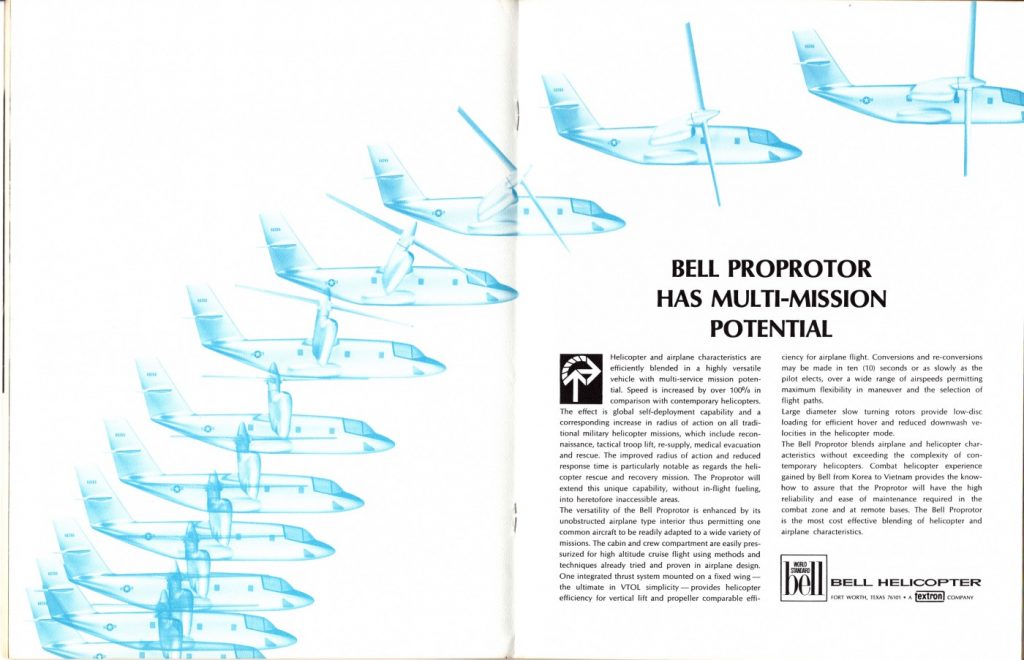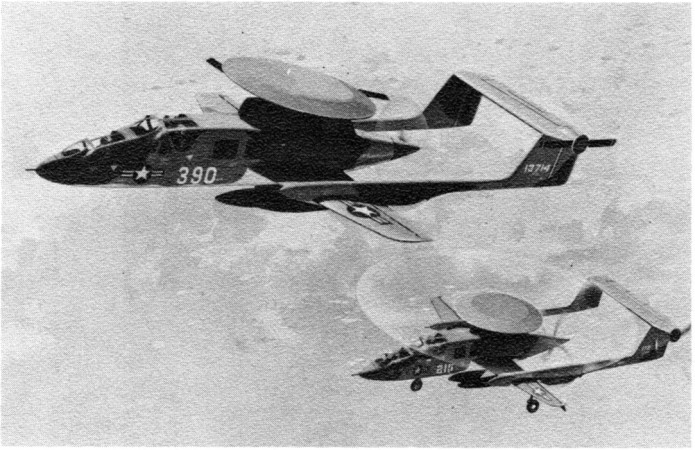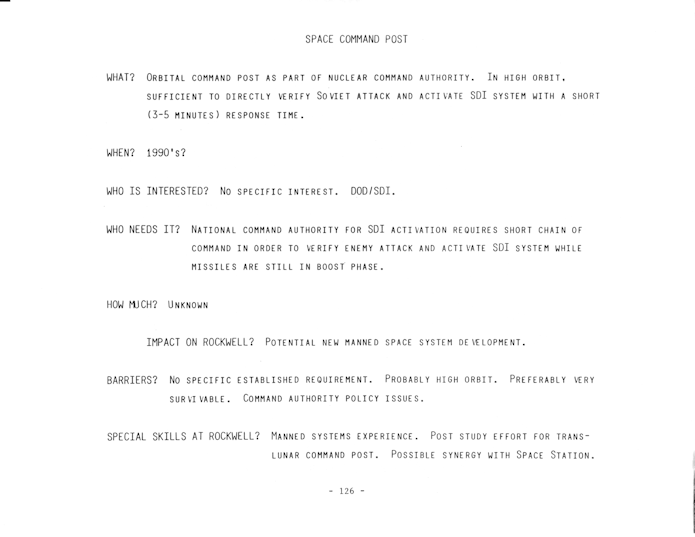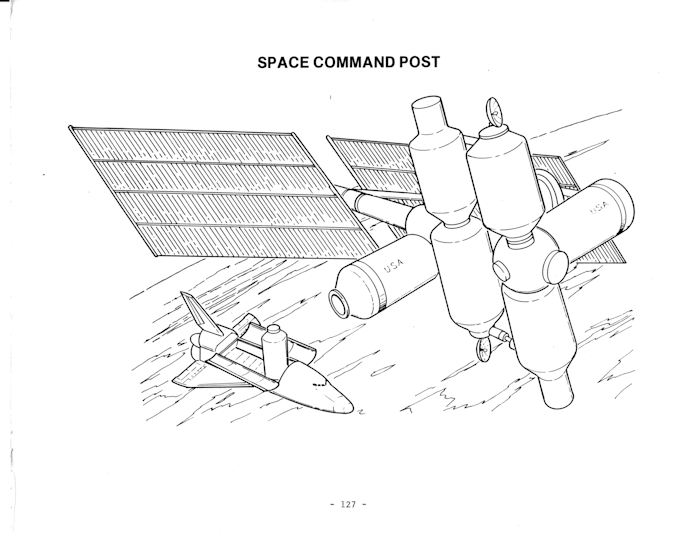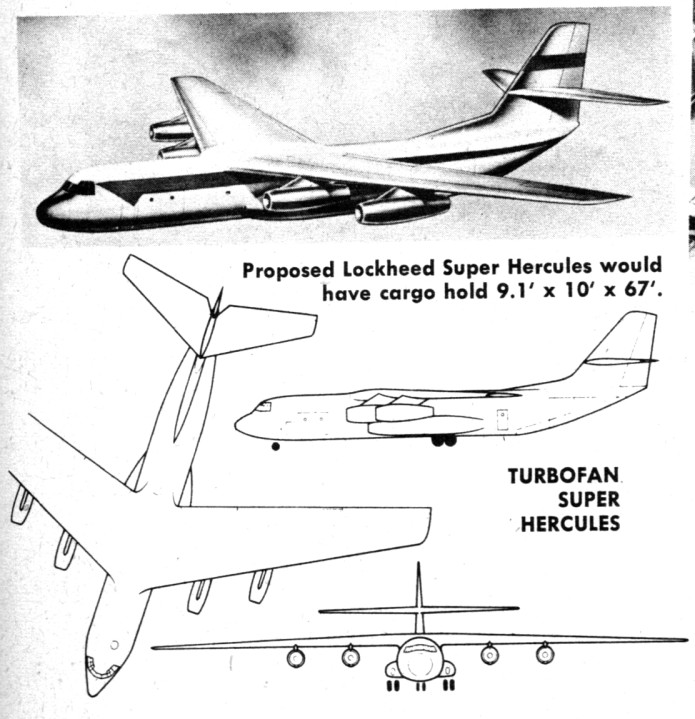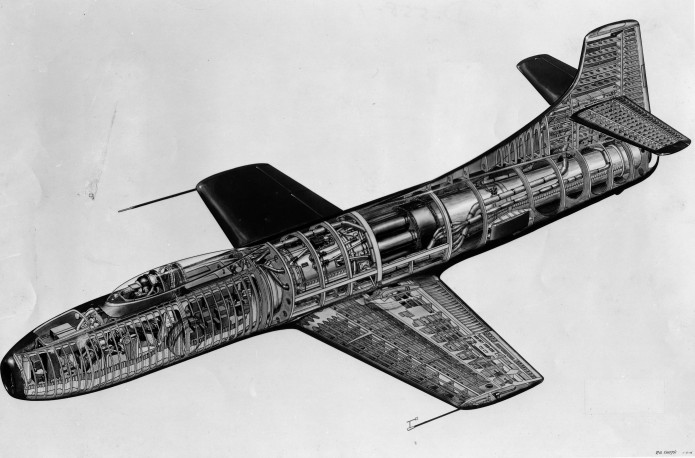Cutaway artwork of the early CH-53A transport helicopter from the mid 1960’s.
The HC-130H is the designation of the Hercules cargo aircraft modified for Coast Guard search and rescue. The first one, shown in the diagram below, was given a number of modifications from the standard C-130. Most obvious was the radome fairing above the fuselage and the Fulton device on the nose. This meant that the aircraft was capable of snagging a balloon-lifted cable, and then snatching a payload – possibly a person – from the ground. See “The Dark Knight” for a demonstration…
A 1967 magazine ad depicting a then-contemporary Bell Helicopter design for a multi-mission tiltrotor. This vehicle was similar in both design and intent to the V-22 Osprey, though with a single central vertical stabilizer, and with a wing mounted near the top of the fuselage but not *above* the fuselage. Consequently, with that tall tail and un-movable wing, this vehicle would not have been foldable for storage on an aircraft carrier.
I’m slowly stitching together a series of scans of a very, very large paint guide for the B-1B. The first sheet of six shows the port side of the fuselage.
This first sheet is in the catalog of the APR Patreon and the Monthly Historical Document Program for patrons/subscribers to vote for. As the other sheets are completed, they will be added to the catalog.
Dating from late 1965-early 1966, the Ryan “Disk Rotor” was pretty much what it sound like. A helicopter had three rotor blade for vertical takeoff and hovering; as the aircraft gained speed with the use of a pusher prop, the rotors would stop rotating and would fold within a large diameter thin central disk. the disk would serve as an aerodynamic fairing, reducing drag at high speed. The aircraft, for which I’ve spent about 30 years searchign for data on, was apparently meant to be a counter insurgency plane along the lines of the OV-10.
In 1985, Rockwell International considered the possibility that there might be profit in a space station with a singular purpose… to serve as a command post in the event of a nuclear war. Its position would let it confirm Soviet ICBM launches and direct space based weapons in their response. Presumably this means that there would need to be several such orbital command posts. The brief description suggests that the command post would be in “high orbit,” perhaps geosynchronous; to have global coverage, at least two and preferably three or more such posts would be needed. The lower the orbit, the more would be needed to see the whole planet.
Given the craziness going on, I decided that what the world clearly needs is something consistent. Like, say, me posting one piece of aerospace diagram or art every day for a month or so. So I’m going to do that. But in order to keep people from getting too complacent, I’m posting some of them on this blog, some on the other blog. Why? Because why not, that’s why. I’m slapping the posts together now and scheduling them to show up one at a time, one a day. Given the pandemic… who knows, this little project might well outlive *me.*
So, check back in (on this blog or the other) on a daily basis. Might be something interesting.
Cutaway artwork of the Douglas D-558-I Skystreak, a transonic research plane designed and built in the mid 1940’s for the US Navy. Like the contemporary Bell X-1 rocket plane, it had straight wings; but unlike the X-1, it had a turbojet engine and could take off under its own power. It could only get supersonic in a dive. Douglas followed the D-558-I with the D-558-II Skyrocket, a very different and much more advanced aircraft that could fly much faster.
The full-rez scan of this cutaway has been made available to all $4 and up APR Patreons and Monthly Historical Document Program subscribers. It has been uploaded to the 2020-03 APR Extras folder on Dropbox for Patreons and subscribers. If interested in this piece or if you are interested in helping to fund the preservation of this sort of thing, please consider becoming a patron, either through the APR Patreon or the Monthly Historical Document Program.
